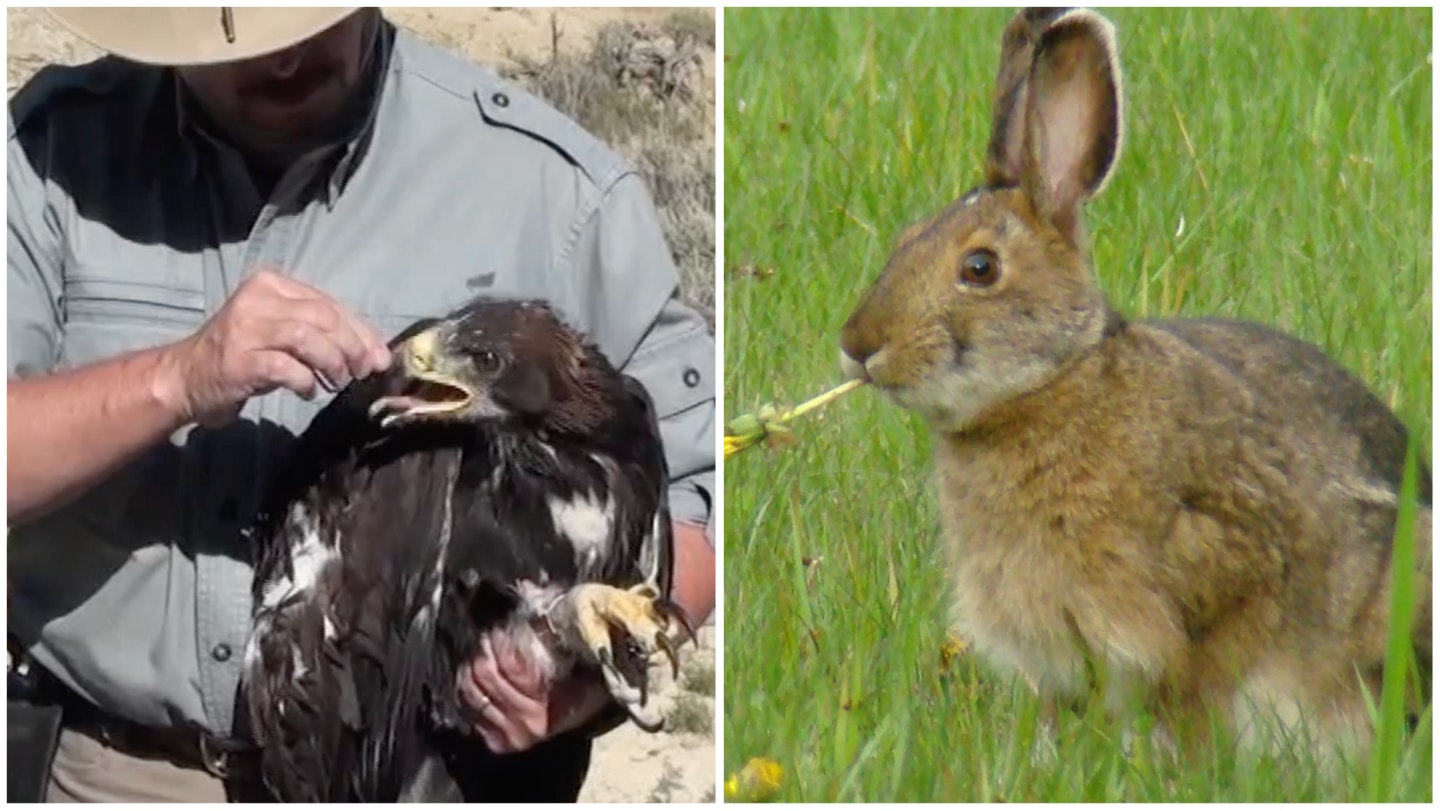By Wendy Corr, Cowboy State Daily
In the Big Horn Basin, golden eagles are the apex predator, and their primary prey is cottontail rabbits. But a deadly disease has decimated the rabbit population, which are a key food to many different predators — so any decline in their numbers will affect the entire ecosystem.
That’s according to Dr. Charles Preston, one of the world’s leading experts on raptors like the golden eagle.
“Rabbit Hemorrhagic Disease Virus (RHDV2) is a highly contagious disease that is passed among rabbits and hares,” he told Cowboy State Daily. “In the 1980s, and 1990s, this Rabbit Hemorrhagic Disease Virus was found in Europe, and it really devastated European hares and rabbits – and therefore devastated the ecosystem, in a sense.”
Preston is the founding and senior curator emeritus of the Draper Natural History Museum at the Buffalo Bill Center of the West in Cody, and a research associate at the Teton Raptor Center in Wilson. He explained that the rabbit disease first showed up in the U.S. in 2018, and in Wyoming in late 2020. It kills up to 80% of infected animals and is rapidly spreading throughout parts of North America.
Preston said that a regular fluctuation in rabbit numbers occurs every 6-8 years. Researchers expected a rebound in the rabbit population in 2020, which should have resulted in an uptick in the numbers of golden eagles.
“What we found was that not only did rabbits not rebound, but they declined from their lowest before,” Preston said. “And again in 2021, 2022, they’ve really stayed down in the tank.”
Preston said that this year has revealed the lowest abundance of rabbits that they’ve seen since the study began in 2009. And not just in cottontails, the eagle’s primary food source.
“Here in our area, this virus affects both jackrabbits and cottontails – every species of cottontail,” he said. “In fact, it even would affect pica, close relatives of the rabbits that live in the higher elevations.”
Effect On Golden Eagles
Along with staff and volunteers at the Buffalo Bill Center of the West in Cody, Preston has been studying the Golden Eagle population since 2009. He said this is the most dramatic decline in population they’ve observed.
“We now have 14 years of data showing cyclic ups and downs of Golden Eagle reproduction that match the ups and downs of cotton tail abundance,” said Preston.
He explained that when food abundance is low, the female golden eagle that is laying the eggs is not in top physiological condition, and so might not even lay eggs. “Sometimes if they have enough nutrition, they can lay the eggs, but they just don’t have the energy, the nutrition to incubate the eggs, or – if the eggs hatch – to feed the young,” said Preston.
Not A Danger to Humans
Preston stressed, though, that RHDV2 is in no way dangerous to humans or other pets – simply to rabbits.
“Rabbits really take it on the chin,” he said.
Primary Prey
Although Golden Eagles are versatile predators, Preston pointed out that even when cottontail rabbit populations are low, they are still the preferential prey of raptors.
“Through these cycles, we find that the Golden Eagle still focuses primarily on cottontails,” he said. “Anywhere from 60 to 80% of the diet is made up of cottontails – during the nesting season, at least.”
Preston said that eagles will take other prey, such as ravens, great horned owls, coyotes, pronghorn fawns and even prairie dogs.
But disease has hit the prairie dog population as well.
“There’s a plague that goes through prairie dog colonies,” Preston said. “And so for the last several decades, prairie dog populations are probably about 70% lower than would be the natural background for them.”
Populations Expected To Rebound
Preston said in time, the rabbit population will come back up, as those rabbits with immunity pass that along to their offspring. But that’s in the future.
“It may be that some rabbits have a natural immunity, just like we do to certain diseases,” he said. “And in time, populations will rebound.”
But right now, the dramatic effect of RHDV2 is decimating not only the rabbit population, but the golden eagles and other predators that feed on the rabbits.
And he said there’s no way to tell what the long-term effect will be on the Golden Eagle population.
“We expect them to broaden their diet,” said Preston. “But it’s not going to be enough to make up for the loss of cottontails, probably. And so reproduction will, as we’ve seen already, stay very low.”





